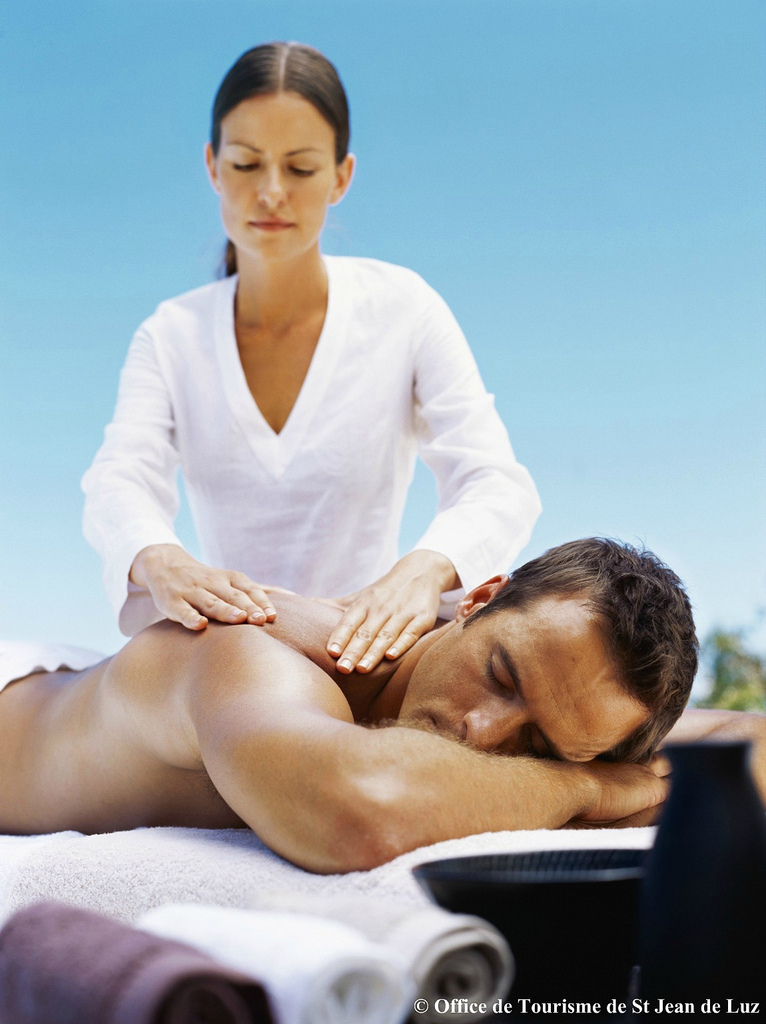You’re paying for it. So get the most out of it!
Here are a few basic tips for making your massage the best experience you can.
1. “Relax all the way and don’t help us.”
That’s what Licensed Massage Therapist (LMT) Bobbie Hayek says. Just let go! You help enough the rest of the time. Let your LMT do the work.
Being on time or early for your appointment, so you’re not rushed, can help. And remember that your own comfort will help you relax. So only undress to your level of comfort. And let your LMT know if you’re uncomfortable in any way.
2. Communicate with your LMT.
Your LMT wants to know:
- How’s the pressure?
“Pressure’s a big one,” says Hayek. “We certainly don’t want to hurt you.”
- Any sore or tender areas.
Let your LMT what areas need work the most, and what areas, if any, to avoid. If something started to bother you during a recent workout or if you were on a plane for six hours the day before, your LMT wants to know.
- How’s the temperature?
“Warm muscles are easier to manipulate,” Hayek says. If you’re cold, your LMT can turn up a table warmer or add a blanket. And if you’re too warm, your LMT will help cool you down a bit so you’re not uncomfortable and sweaty.
3. Hydrate!
Drinking plenty of water the few days before you come in will help your muscles be more easily manipulated, which will mean less sore recovery time for you.
Maybe don’t drink a ton of water right before you come in, so you won’t have to go to the bathroom as soon as you get on the table. Also, give food time to digest before a massage.
Remember to drink extra water after a massage to help flush the toxins out of your system that massage released.
4. Breathe.
If you are feeling tense, focus on your breath. This is a good rule of thumb in your daily routine, but it may be especially useful when you’re on the massage table for the first time, or if you have a lot else on your mind. You can also concentrate on where the massage therapist is working, and imagine sending your breath to that part of your body.
“Breathing tells me a lot,” Hayek says. “Most people are so relaxed it’s almost like they’re sleeping, so they’re taking in long, deep breaths anyway. But a sharp intake of breath usually indicates to me that I’m hurting them.”
A practice Hayek recommends to know how well you’re breathing is to lie on your back with your hands on your stomach. “Breathe in deeply, and your hands should be moving up and down with your stomach. That way you know you’re drawing air in to your diaphragm.”
5. “Be consecutive with your massages.”
Hayek says that maintaining a regular pattern for massage – if that’s once a week or once a month, whatever is right for you. “As long as you’re coming steadily,” Hayek says, “it can really make a big difference.”
6. Have a thorough self-care regimen.
Massage is just one piece of having a healthier life. If you maintain a healthy diet, drink plenty of water, and exercise regularly, any other improvement you try to make will be helped – like getting massage.
7. Stretch!
Your LMT may offer some suggestions for how to help a pain area on your own. For heaven’s sake, follow their instruction! It is for your own good. Sit up straight at your computer. Stretch out those pecs in the doorway. Try the tennis balls on your neck. Massage is a passive form of exercise. So stretch out afterward. And keep stretching in between.
Photo: Terre et Côte Basques


